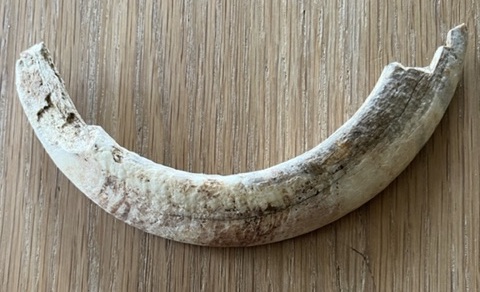It was the first of May 1850, and in Towngate West, eighty-year-old Elizabeth Goodale was in bed suffering from influenza. She and her husband were wealthy farmers, employing a cook and several housemaids, and it was Mrs Goodale’s habit to request two cups of tea with her breakfast, followed by a third cup with some brandy in it.
That morning, the final drink was handed to her by sixteen-year-old Catherine Casterton who had been their maid for a few months, but was on notice to leave, due to a misdemeanour. Mrs Goodale immediately complained of an unpleasant taste and burning in her throat. Other family members suspected poison and a doctor was sent for. When Catherine was confronted, she admitted adding rat poison to the tea. She was taken before a local magistrate, Reverend William Hildyard who sent her to Lincoln prison for trial at the next Assizes.
The Goodales’ property is now called Towngate House, after being re-built by their son John around 1860. They known as a kindly couple. Elizabeth was described as a sincere friend of the poor, and some of William Goodale’s farm labourers remained with him for over thirty years.
While Catherine was in prison, she said she wanted Mrs Goodale to die so that she would be given a black gown. It was usual for domestic staff to be bought mourning clothes when their master or mistress died, and as Mrs Goodale was very elderly and ill, the girl may have been looking forward a new outfit. After receiving notice to leave her job, she tried to hasten the process along! A bottle labelled “poison”, usually kept in the farm’s parlour for killing vermin, was found hidden in the maid’s bedroom. Its contents included mercury and matched the substance in Mrs Goodale’s tea, though the quantity was insufficient to be fatal, even if she had drunk it all.
In court, Catherine was described as a delicate-looking young woman. Her crime incurred a mandatory death sentence, but the jury recommended mercy in view of her youth and she was ordered to be transported to a foreign land for fifteen years.
In October 1851 she set sail from Woolwich for Tasmania on a wooden sailing ship named Anna Maria. On board were 195 other female convicts and 46 children – some were the infants of the convicts and others came from workhouses. The ship’s doctor recorded that sleeping places were kept extremely clean, and stoves kept the decks warm and dry, but the water closets were unhygienic and gave off a stench. Many passengers suffered severely from dysentery, including Catherine who was transferred to hospital when they docked in Hobart on 26th January 1852. The voyage had lasted over sixteen weeks, during which time five women and five children died.
Catherine was pardoned four years later and in 1856 she married John Marshall who had emigrated to Tasmania from Nottingham. They brought up a family and remained in Hobart for the rest of their lives. She died in 1896 and the opening verse of an English hymn was carved on her gravestone: “Now the labourer’s task is o’er, Now the battle day is past, Now upon the farther shore, Lands the voyager at last…”
Elizabeth Goodale died in 1853 aged 83 and her husband, William died two years later. They are commemorated by a plaque inside St Guthlac’s church.
(Sources: newspaper reports of the trial, log book of the convict ship, Australian convict records and information from one of Catherine’s descendants.)




